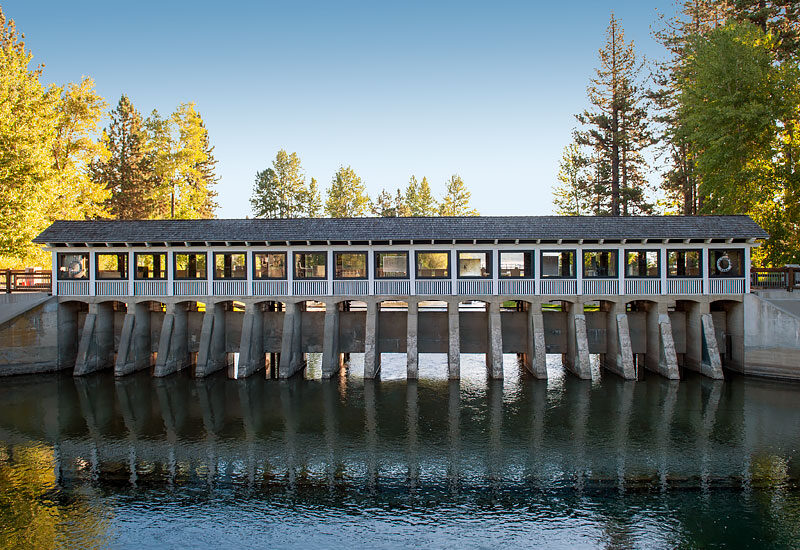Welcome to the Lake Tahoe Outlet Gates, a significant California Historical Landmark nestled in the stunning landscape of Tahoe City. This site is not only a key piece of the area’s natural beauty but also a fascinating chapter in the history of regional water management. First constructed in 1870, the Lake Tahoe Outlet Gates regulate the flow of water from Lake Tahoe into the Truckee River, the lake’s only outlet. This control has been crucial in managing the water levels of the lake and the downstream flow to the Truckee River, which eventually winds its way into Nevada.
The outlet gates became the center of the ‘Tahoe Water War,’ a heated dispute lasting two decades between the lakeshore owners and downstream users. This conflict was fueled by the differing needs and priorities of those who lived around the lake and those who depended on the water further downstream. The war finally reached a resolution in 1910-11, thanks to advancements in hydrology developed by Dr. James E. Church, Jr. His techniques for measuring the water content in snow allowed for more accurate predictions of the seasonal rise in water levels, easing tensions between the competing interests.
While you stand here today, you can imagine the bustling scene over a century ago when engineers and locals alike would gather to debate the future of this critical waterway. The gates you see now have evolved over time, but they remain a testament to the era’s innovative spirit and the ongoing necessity of balancing human needs with natural resources.
As you enjoy the view, consider the path of the Truckee River, a rare west-to-east flowing river in California. It travels 121 miles from this point, through the Sierra Nevada, and across the Nevada landscape, ultimately emptying into Pyramid Lake, which has no outlet. This journey makes the Truckee River a vital waterway in the region, supporting both human and ecological communities along its course.
Remember, the Lake Tahoe Outlet Gates are more than just a beautiful spot—they’re a living piece of history, reflecting the challenges and triumphs of water management in the West.






